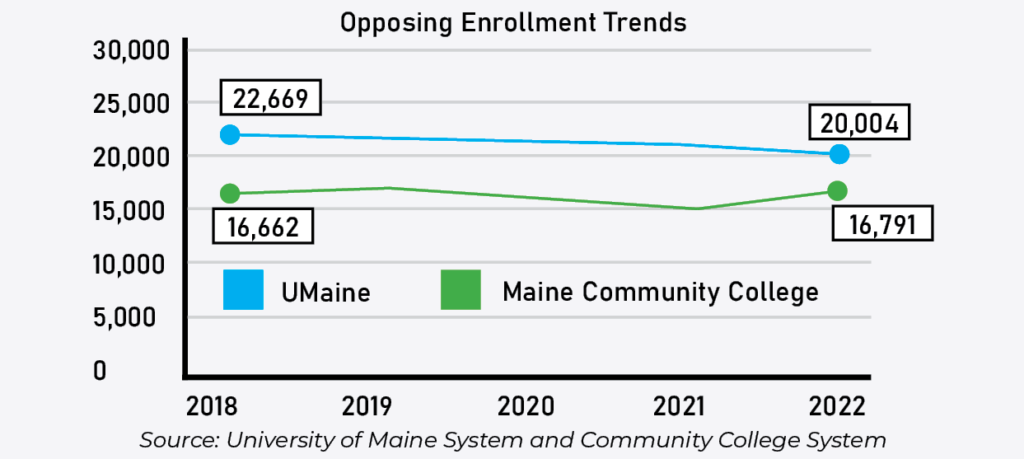By Paul Johnson, Professor, University of Southern Maine and Jackie Edmondson, Professor, University of Southern Maine

Governor Mills announced last September that students who had graduated from high school over the previous two years would be eligible to attend any of the State’s Community Colleges for free. The “Free College Scholarship” is aimed at re-engaging people whose high school experience was severely disrupted by COVID.
The Free College Scholarship was funded with a one-time $20 million State allocation, and its continuation is included in Governor Mills’ proposed budget for FY 24. The expansion of short-term training programs was funded through the Maine Jobs Recovery Plan and a grant from the Harold Alfond Foundation.
The outcome was that Fall enrollment at Maine Community Colleges was up 12 percent: Southern Maine Community College enrollments rose 11% and York Community College’s rose 18%. Maine educators universally applaud the state’s support for higher education.
We are now seeing that this support had unintended consequences, including continued decreased enrollments in the University of Maine System. According to the University of Southern Maine Office of Analysis, Application, and Institutional Research, this year USM undergraduate enrollment was down 5.7% from Fall 2022.
USM currently has strong transfer agreements with community colleges in Maine, which means students can seamlessly follow curricular pathways from the community college to the University. We will continue to develop additional transfer agreements.
However, it is also time to consider how we support higher education throughout the state.
Over the last 20 years, student tuition has become the major source of income for the University of Maine System. This is not sustainable. The University of Maine System needs more financial appropriations from the Legislature, private philanthropy, endowments, and grants. The Legislature has increased state appropriations to the University of Maine System by 3% over the past two years, but State appropriations for the UMS has increased annually on average by just 0.9% of the last 15 years. Maine ranks 42nd in the nation for State support for higher education.
We must create clear pathways for students to move seamlessly from the Community College System into a four-year degree program at one of the UMS campuses.
Additionally, we must create more four/one programs whereby a student can complete their undergraduate degree in four years and with a fifth year can complete their master’s degree.
If students make a commitment to remain in Maine after graduating, we should consider waiving a portion of their tuition.
Agencies could offer students a stipend whose degree programs require an internship or placement with the understanding students will remain with the program when they graduate. Then if the students remain at the agency or program for at least two years, waive their tuition.
In her inaugural address, Janet Mills asserted she would stay focused on the issues she campaigned on: Strengthening Maine’s economy and addressing the State’s workforce shortage. Implementing some of the aforementioned ideas would address these two questions and better support our system of higher education.
However, if we continue to impose debt on our students, make it more difficult to attend university, continue to see four-year graduation rates of approximately 30%, and six-year graduation rates of about 40%, the outlook is bleak.
We can take a bold stance, as was done at the beginning of this current academic year when the Governor and Legislature agreed they needed to think differently on how to get high school students on track for higher education. We can do this in partnership with our Community College system and with support from our State elected officials. The potential is there.
 |  |
| Paul Johnson, Professor, University of Southern Maine | Jackie Edmondson, Professor, University of Southern Maine |




